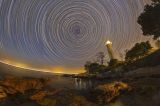Hi, I'm Jerome Vidry. I live in Montreal since 2007.
PHP Developer since 2005. I worked on any kind of projects, from basic website, to more complex systems, including mobile applications.
I have a deep knowledge of PHP capabilities and I am able to solve any kind of problem.
I am able to lead a project, from the conception, to the delivery, managing the development of the different modules.
Find more about my previous work in my Portfolio.
PHP Developer since 2005. I worked on any kind of projects, from basic website, to more complex systems, including mobile applications.
I have a deep knowledge of PHP capabilities and I am able to solve any kind of problem.
I am able to lead a project, from the conception, to the delivery, managing the development of the different modules.
Find more about my previous work in my Portfolio.
3I/ATLAS Flyby
Attention grabbing interstellar visitor
3I/ATLAS made
its not-so-close flyby of our fair planet on December 19
at a distance of 1.8 astronomical units.
That's about
900 light-seconds.
Still,
this deep exposure
captures the comet from another star system as it
gently swept across
a faint background of stars in the
constellation Leo about 4 days earlier, on the night of December 15.
Though faint, colors emphasized in the image data,
show off the comet's yellowish dust tail
and bluish ion tail along with a greenish tinged coma.
And even while
scrutinized by arrays of telescopes and spacecraft from
planet Earth, 3I ATLAS is headed out of the Solar System.
It's presently moving outward
along a hyperbolic
trajectory
at about 64 kilometers per second
relative to the Sun, too fast to be bound the Sun's gravity.























 Astronomy Picture Of the Day
Astronomy Picture Of the Day

